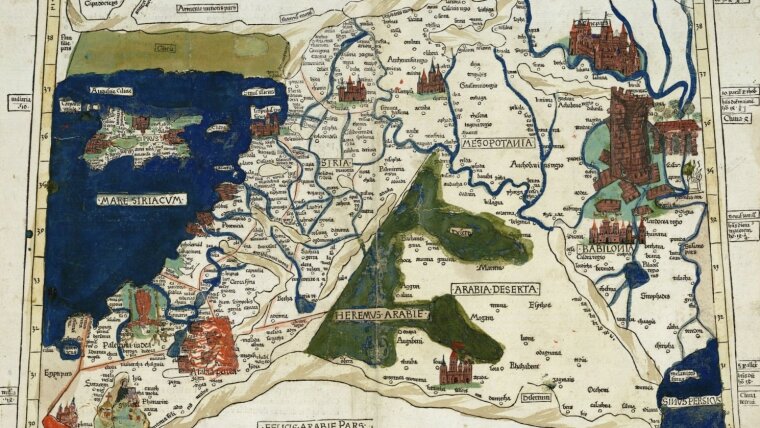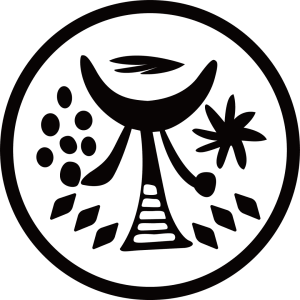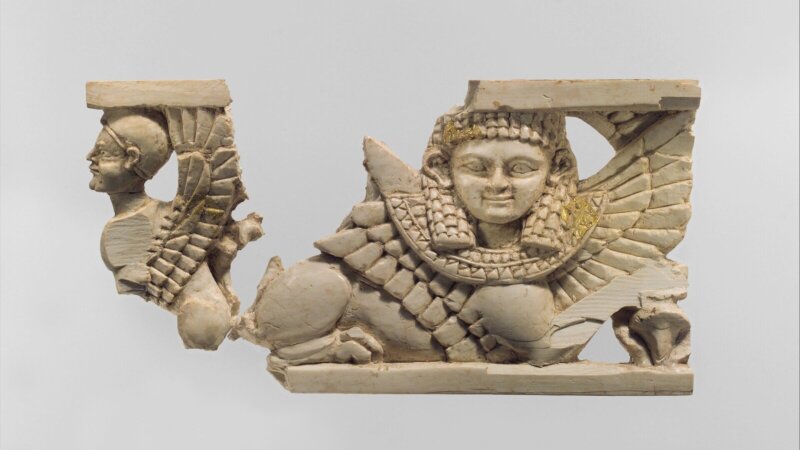
Logo based on an impression of a Neo-Assyrian Stamp seal with divine symbols (MET 74.51.4368)
Graphic: T. TangThe transition from the Bronze Age to the Iron Age (13th–10th centuries BCE) marked a significant shift in power structures in the Near East. While previous scholarship put much emphasis on the disruption and discontinuity between the Bronze and Iron Ages, there is now an increasing focus on the continuities.
The project examines the Levant—a contact zone between the large empires in Egypt, Asia Minor, and Mesopotamia—during this transition. It aims to explore the continuities and discontinuities across the Fertile Crescent, including connections to the Arabian Peninsula and the Aegean world, at various societal levels.
Specifically, the project investigates the extent of socio-economic continuities in rural hinterland populations, advancing the hypothesis that the resilience of local and regional clan and tribal structures underpinned both late Bronze Age city-states and Iron Age territorial states.
Upcoming Conference: “Continuity and Discontinuity in the 'Fertile Crescent' during the Bronze to Iron Age Transition”
The Conference will be held from September 8th to 10th, 2025, at Friedrich Schiller University Jena, Germany. Focusing on the topic of continuity and discontinuity in the Fertile Crescent during the transition from the Bronze to the Iron Age, the conference aims to bring together interdisciplinary scholars from the field of archaeology, philology, and biblical studies from across the regions of Mesopotamia, the Levant, Egypt, and Anatolia to confer and discuss the cultural, technological, and societal continuities and changes that occurred during this transformative period in history.
Key Information:
- Dates: September 8th–10th, 2025 (Monday to Wednesday).
- Venue: Friedrich Schiller University Jena, Conference Hall of the University Library (ThULB, Room 102). Parts of the conference will be held on Zoom.
- Program: Please refer to the flyerpdf, 1 mb · de or the tables below for the full program.
For questions, please contact: altorientalistik@uni-jena.de or juliane.stein@uni-jena.de
Zoom registration:
Register here to join the conference online:
When: Sep 8, 2025 09:00 AM Amsterdam, Berlin, Rome, Stockholm, Vienna
Topic: Continuity and Discontinuity in the 'Fertile Crescent' during the Bronze to Iron Age Transition
Register in advance for this webinar:
https://uni-jena-de.zoom-x.de/webinar/register/WN_gLlCebTUTruBHdCiD_CeMAExternal link
After registering, you will receive a confirmation email containing information about joining the webinar.
Program
| Monday, September 8 | |
| 8:30 | Reception |
| 9:00 | Welcome |
| 10:00–10:15 | Coffee Break |
| Northern Levant and Anatolia | |
| 10:15–10:50 | Ilya Yakubovich, Hittite/Luwian and Hurrian Influence in the Levant: The Contact-Linguistic Perspective |
| 10:50-11:25 | Andreas Schachner, The Collapse of the Hittite Empire. Evidences from its Capital Hattusha and Beyond |
| 11:25-12:00 | Mirko Novak, Resilience Versus Collapse. Reasons for Different Collective and Cultural Reactions to Crisis Situations exemplified on the ‘Neo-Hittite’ Culture |
| 12:00-14:00 | Lunch Break |
| Late Bronze to Iron Age Transition in the Northern Levant | |
| 14:00–14:35 |
Gunnar Lehmann, Continuity and Change in Cilicia and Northern Syria During the 12th Century BCE |
| 14:35–15:10 | Juliane Stein, The Bronze to Iron Age Transition in Tell Rifaat |
| 15:10–15:45 | Jesse Millek, The Myth of Missing Metals at the End of the Bronze Age |
| Tuesday, September 9 | |
| 8:30 | Reception |
| Babylonia |
|
| 9:00-9:35 | Tim Clayden, What Happened to Babylonia Before and After the End of the Kassite Dynasty? |
| 9:35-10:10 | Jonathan Tenney, What is ‘Middle’ About the Middle Babylonian Period? |
| 10:10-10:45 | Yuval Levavi, What is ‘New’ About the Neo-Babylonian period? |
| 10:45-11:00 | Coffee Break |
| Late Bronze Age to Iron Age Transition in the Levant | |
| 11:00-11:35 | Teresa Bürge, The Late Bronze to Early Iron Age Transition in the Jordan Valley: Continuity, Transformation, and Innovation |
| 11:35-12:10 | Stefanie Eisenmann, Genetic and Isotopic Perspectives on Human Mobility and Locality in the Bronze and Iron Age Levant |
| 12:10-14:10 | Lunch Break |
| Late Bronze Age to Iron Age Transition in the Southern Levant | |
| 14:10-14:45 | Ido Koch, The Southern Levant in the Early Iron Age: Colonial Legacies, Local Adaptations, and Societal Reorientations |
| 14:45-15:20 | Omer Sergi, The Jezreel and Beth-Shean Valleys Between Egypt and Israel: Continuity in Rural and Urban Landscapes and its Significance |
| 15:20-15:35 | Coffee Break |
| 15:35-16:10 | Benedikt Hensel, From Hero to Zero? The Bronze Age/Iron I Transition at Hazor - With Some Remarks on Biblical Traditions |
| 16:10-16:45 | Assaf Kleiman, Forgetting Jebus: Canaanite Monuments in Iron Age IIA Jerusalem |
| Wednesday, September 10 | |
| 8:30 | Reception |
| Late Bronze Age to Iron Age Transition in Egypt | |
| 9:00-9:35 | Laura Gonnermann, Egyptian Amulets in the Southern Levant: Objects of Continuity and Discontinuity in a Transitional Era |
| 9:35-10:10 | Laura Gonnermann, Egyptian Amulets in the Southern Levant: Objects of Continuity and Discontinuity in a Transitional Era |
| 9:35-10:10 | Henning Franzmeier, After 1177 BC: The Delayed Transition of Pharaonic Egypt |
| 10:10-10:25 | Coffee Break |
| 10:25-11:00 | Elena Hertel, Continuity and Change in Ancient Egyptian Manuscript Culture During the Bronze to Iron Age Transition |
| 11:00-11:35 | Hannes Bezzel, Bronze Age Memories in Iron Age Literature? Methodological Challenges in Hebrew Bible Exegesis |
| 11:35-13:35 | Lunch Break |
| 13:35-15:00 | Discussion/Proposal for Research Group |
Team
-
Bezzel, Hannes, Univ.-Prof. Dr Professur Altes Testament
Room 104
Fürstengraben 6
07743 Jena -
Hackl, Johannes, Prof. Dr Lehrstuhl Altorientalistik
Room D 307
Zwätzengasse 4
07743 Jena
Image: Jürgen Scheere -
Stein Berechya, Juliane Lehrstuhl Altorientalistik
Room D302
Zwätzengasse 4
07743 Jena
Image: Jennifer Witthuhn
Kontakt


